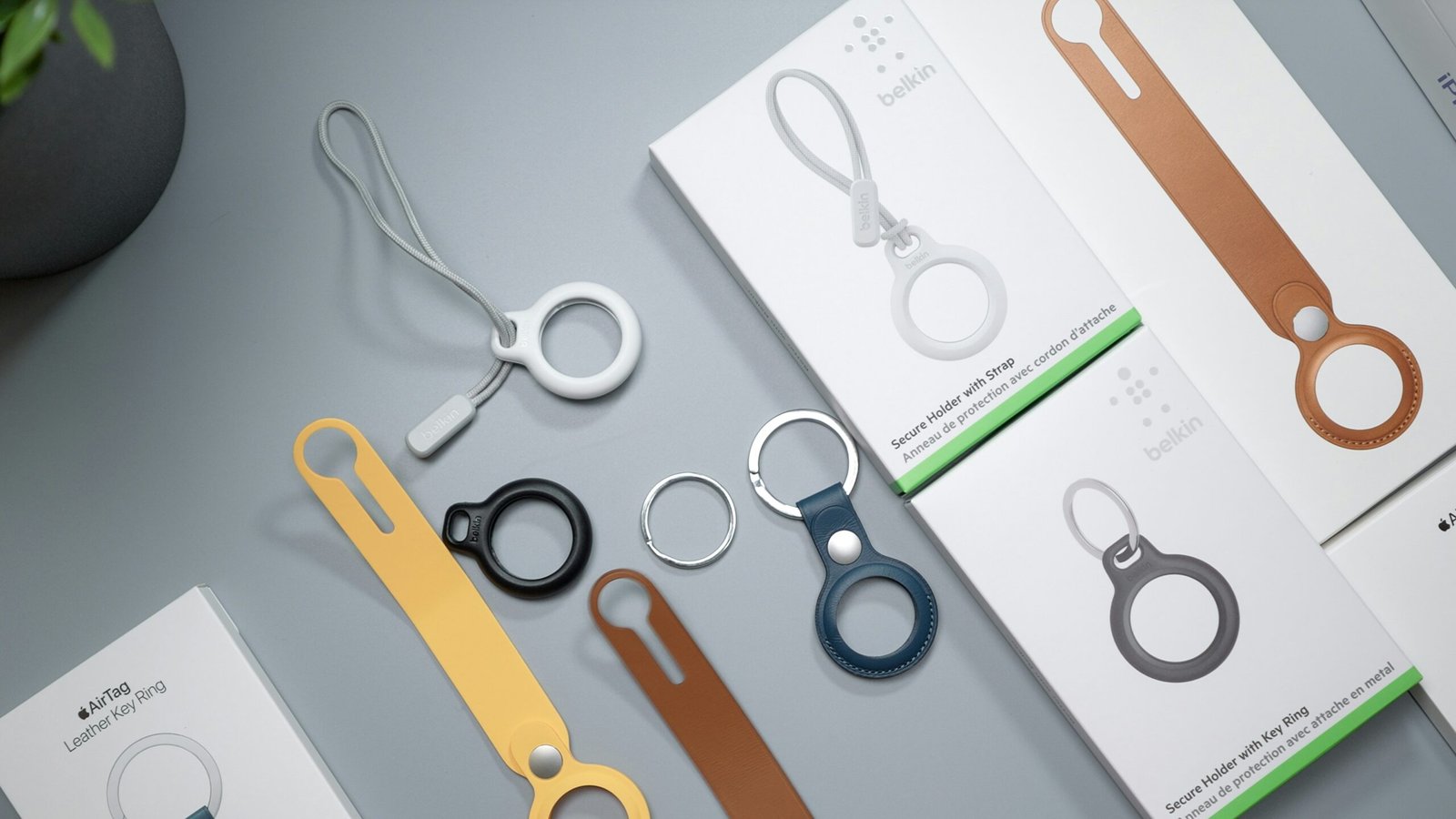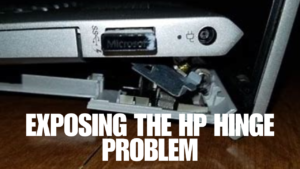Apple’s Second-Generation AirTag in the Works: What to Expect in 2025

Photo by Daniel Romero on Unsplash
Introduction: The Evolution of AirTag
Since its initial launch in April 2021, Apple’s AirTag has significantly impacted the market for personal tracking devices. Designed to help users locate lost items with ease, the AirTag quickly garnered attention for its seamless integration with Apple’s ecosystem and impressive functionality. The primary features of the AirTag include precision finding, leveraging the power of the U1 chip and Ultra-Wideband technology, and the extensive Find My network, which utilizes a vast network of Apple devices to locate lost items even when they are out of Bluetooth range.
Upon release, the AirTag became a popular accessory for Apple users due to its sleek design, ease of use, and reliable performance. Its user-friendly interface, combined with the accuracy of location tracking, made it an essential tool for individuals who frequently misplace personal items such as keys, wallets, and bags. The AirTag’s replaceable battery, which offers up to a year of usage, also contributed to its widespread adoption.
Over the years, Apple has introduced various updates to enhance the AirTag’s functionality and address user concerns. Notably, Apple implemented features to improve privacy and security, responding to feedback regarding potential misuse. For example, Apple introduced alerts to notify users of unknown AirTags traveling with them and updated the device to emit sound more frequently when separated from its owner.
The anticipation for the second-generation AirTag is high, with consumers expecting further advancements in technology and design. As Apple continues to innovate, the potential for new features and improvements in the upcoming AirTag has generated significant buzz among tech enthusiasts and loyal Apple customers alike. The journey of the AirTag from its initial launch to its current state sets a promising stage for what is to come in 2025.
Why a Second-Generation AirTag?
Apple’s decision to develop a second-generation AirTag stems from a confluence of factors, including consumer feedback, technological advancements, and market competition. The first-generation AirTag, launched in April 2021, was lauded for its ability to help users keep track of personal items such as keys, wallets, and bags. However, as with any first iteration of a product, there were limitations and areas for improvement that users and critics alike pointed out.
One of the primary reasons for the development of a second-generation AirTag is to address the limitations identified in the first version. Users have reported concerns about the battery life, which, while replaceable, could benefit from enhancements to extend its longevity. Additionally, the audible alert mechanism, crucial for locating lost items, has room for improvement in terms of volume and sound clarity, especially in noisy environments.
Consumer demand also plays a pivotal role in Apple’s decision. The popularity of the first-generation AirTag has created a strong market for tracking devices, prompting Apple to refine and expand its product offerings. With the rise of smart home devices and the Internet of Things (IoT), consumers are increasingly looking for more integrated and efficient solutions to manage their belongings. A second-generation AirTag promises to deliver enhanced features that meet these evolving needs.
Technological advancements are another driving factor behind the development of a new AirTag. Innovations in Bluetooth technology, ultra-wideband (UWB) capabilities, and battery efficiency offer opportunities for Apple to incorporate cutting-edge features into the second-generation device. These advancements can lead to improved precision, better energy management, and enhanced overall user experience.
Finally, market competition cannot be ignored. Competitors such as Tile and Samsung’s SmartTag are continually upgrading their products, pushing Apple to stay ahead in the tracking device market. By developing a second-generation AirTag, Apple aims to maintain its competitive edge and offer a product that not only meets but exceeds consumer expectations.
Expected Features and Improvements
The second-generation AirTag is rumored to bring several enhancements over its predecessor, with notable improvements in battery life, range, accuracy, and integration with other Apple devices. According to leaks from credible sources such as renowned analyst Ming-Chi Kuo and tech publication MacRumors, these upgrades are set to refine the user experience significantly.
One of the primary enhancements anticipated in the new AirTag is a longer battery life. The current model’s battery typically lasts about a year, but the next iteration is expected to feature a more efficient power management system. This improvement could extend the battery life by several months, reducing the frequency of battery replacements and enhancing the convenience for users.
The range is another area where the second-generation AirTag is expected to excel. Utilizing advancements in Bluetooth and Ultra-Wideband (UWB) technology, the new AirTag may offer an extended range, making it easier to locate items over greater distances. This enhancement could be particularly beneficial in larger spaces or for users who frequently misplace items in expansive areas.
Accuracy in locating items is also likely to see a significant boost. The integration of the latest U1 chip is anticipated to improve the precision of the AirTag’s location tracking. This chip leverages UWB technology, enabling more accurate spatial awareness and providing users with more reliable directions to their lost items.
Additionally, the second-generation AirTag is expected to offer seamless integration with other Apple devices. Enhanced compatibility with the Find My network will allow for more efficient item tracking across iPhones, iPads, Macs, and even Apple Watches. This holistic approach ensures a cohesive ecosystem where users can effortlessly locate their belongings using any Apple device.
In summary, the second-generation AirTag promises to deliver significant improvements in battery life, range, accuracy, and integration with the Apple ecosystem. These advancements, supported by credible leaks and reports, suggest a more efficient and user-friendly experience in item tracking, setting the stage for its anticipated release in 2025.
Design and Aesthetics
The second-generation Apple AirTag is poised to bring several notable improvements in design and aesthetics, aligning with Apple’s commitment to innovation and user-centric design. While maintaining the foundational elements that made the first-generation AirTag successful, this new iteration is expected to introduce subtle yet significant enhancements that will appeal to a broader consumer base.
One of the anticipated changes is in the material composition. Apple may opt for more sustainable and durable materials, reflecting the company’s ongoing commitment to environmental responsibility. Innovations in this area could include the use of recycled aluminum or advanced polymers, providing a sleeker and more robust finish. This shift not only enhances the AirTag’s durability but also resonates with environmentally conscious consumers.
As for the size and dimensions, the second-generation AirTag might see a slight reduction in its profile. A thinner and more compact design can make the device less obtrusive when attached to personal items such as keys, bags, or pet collars. This change would likely improve user experience by making the AirTag more versatile and comfortable to carry around.
The overall look of the second-generation AirTag is speculated to undergo a minimalist refinement. Apple’s design philosophy often embraces simplicity and elegance, and the new AirTag is expected to reflect these principles. Subtle changes, such as a more streamlined shape and refined edges, could enhance the device’s aesthetic appeal without compromising its functionality. Additionally, the AirTag might be offered in a wider range of colors, providing consumers with more personalization options.
In comparison to the first-generation model, these design innovations indicate a thoughtful evolution rather than a complete overhaul. Apple’s approach to refining the AirTag’s design underscores its dedication to enhancing user experience while adhering to high standards of quality and aesthetics.
Enhanced Security and Privacy Features
As Apple prepares to launch the second-generation AirTag in 2025, a primary focus is expected to be on enhancing security and privacy. The first-generation AirTag, while innovative, raised significant concerns regarding unauthorized tracking and misuse. In response, Apple is likely to introduce advanced security measures aimed at mitigating these risks and ensuring user safety.
One anticipated improvement is the integration of more robust end-to-end encryption protocols. This will ensure that the data transmitted between the AirTag and the user’s device remains secure and inaccessible to unauthorized parties. Enhanced encryption will be crucial in safeguarding user location information, thereby fortifying the privacy aspect.
Moreover, Apple may incorporate advanced machine learning algorithms to detect and prevent potential misuse of AirTags. These algorithms could analyze usage patterns to identify suspicious activities, such as unauthorized tracking. If an AirTag is found to be moving with a non-consenting individual, the system could automatically alert the owner and the non-owner, providing real-time notifications to both parties.
Another potential enhancement is the development of a more sophisticated alert system. In the first-generation AirTag, audible alerts were a key feature for notifying individuals of unauthorized tracking. The second-generation AirTag might expand on this by incorporating haptic feedback and visual notifications on paired devices. This multi-faceted alert system would ensure that users are promptly and effectively informed about any security concerns.
Additionally, Apple is likely to leverage advancements in ultra-wideband (UWB) technology. UWB can offer precise location tracking, which can help in more accurately identifying the proximity of AirTags. This, combined with the existing Bluetooth capabilities, would create a more reliable and secure tracking ecosystem.
By addressing the security and privacy concerns associated with the first-generation AirTag, Apple aims to deliver a more secure and user-centric product. The integration of cutting-edge technologies and protocols will likely play a pivotal role in achieving this objective, ensuring that users can confidently and safely utilize their AirTags.
Integration with the Apple Ecosystem
The second-generation AirTag is set to elevate its synergy within the Apple ecosystem, offering users a more seamless and enriched experience. Central to this enhancement is the improved compatibility with a broad range of Apple devices. Whether it’s the latest iPhone, iPad, Apple Watch, or even Mac, the new AirTag will seamlessly connect, ensuring that users can locate their items with unprecedented ease and precision.
One of the most significant advancements anticipated is the enhanced functionality within the Find My app. The app is expected to introduce more intuitive tracking capabilities, possibly incorporating augmented reality (AR) features that could provide a visual guide to your lost items. Additionally, with the potential integration of machine learning, the app could predict and suggest the most likely locations of your items based on your usage patterns and history.
Furthermore, the synergy between the second-generation AirTag and iOS updates is poised to bring about remarkable improvements. With each iOS iteration, Apple continues to refine and expand its ecosystem, and the new AirTag will likely benefit from these enhancements. For instance, deeper integration with Siri could allow for more sophisticated voice commands, enabling users to locate their belongings effortlessly. Users might be able to set up more customized notifications and alerts, ensuring that they are immediately informed if an important item is left behind.
Moreover, the second-generation AirTag could also see improved battery life and efficiency, thanks to advancements in Apple’s hardware and software integration. This would not only make the device more reliable but also reduce the need for frequent replacements or recharging, thereby enhancing the overall user experience.
In essence, the forthcoming second-generation AirTag promises to be more than just a tracking device. By leveraging the full potential of the Apple ecosystem, it aims to provide users with a comprehensive, intuitive, and user-friendly solution for keeping track of their belongings.
Potential Use Cases and Applications
The second-generation AirTag is poised to revolutionize how we keep track of our belongings, offering even more robust functionalities and use cases thanks to anticipated technological advancements. By integrating enhanced precision tracking and improved battery life, the new AirTag will be indispensable in various aspects of daily life, travel, and professional settings.
In everyday life, the upgraded AirTag will seamlessly integrate with household items such as keys, wallets, and remote controls, ensuring you never waste time searching for misplaced objects. Its enhanced features could also offer better support for keeping track of personal items in crowded places, such as shopping malls or public transportation hubs, providing peace of mind in busy environments.
For travelers, the second-generation AirTag will be a game-changer. Imagine attaching an AirTag to your luggage and receiving real-time updates on its location, minimizing the risk of lost or misrouted bags. Additionally, the improved tracking capabilities could assist in locating travel essentials like passports, boarding passes, or even rental car keys, ensuring a smoother and more stress-free travel experience.
In professional settings, the new AirTag’s applications are equally impressive. For instance, in industries requiring the management of numerous tools and equipment, such as construction or healthcare, attaching AirTags to valuable assets can streamline inventory management and prevent losses. Office environments can also benefit by tagging important documents, electronic devices, or company vehicles, enhancing organizational efficiency and security.
Moreover, the expected technological advancements in the second-generation AirTag could enable innovative new scenarios. Enhanced range and precision might allow for more sophisticated applications, such as tracking pets or monitoring the location of young children during outings. Businesses could also leverage these advancements for advanced logistics solutions, improving the accuracy of supply chain management.
Overall, the second-generation AirTag is set to offer a wide range of practical applications, enhancing convenience and security across various aspects of life and work. With its improved functionalities, this innovative device will undoubtedly become an indispensable tool for many users.
Conclusion: What This Means for Consumers
The anticipation surrounding Apple’s second-generation AirTag underscores the company’s relentless drive for innovation. As discussed, the upcoming iteration promises significant enhancements in battery life, tracking accuracy, privacy features, and integration with Apple’s ecosystem. These improvements are poised to elevate user experience, making personal item tracking more efficient and reliable.
For consumers, the second-generation AirTag represents not just a technological upgrade but a step towards a more interconnected and secure lifestyle. Enhanced privacy features will address previous concerns, ensuring that users can track their belongings with greater peace of mind. Improved battery life and tracking accuracy will also mean less hassle and more dependability in everyday use.
On a broader scale, Apple’s advancements in personal tracking devices could set new industry standards, prompting competitors to innovate and improve their offerings. As Apple continues to refine its products, consumers can expect more seamless and integrated solutions that blend into the fabric of their daily lives.
Looking ahead, the market for personal tracking devices is likely to expand, with Apple playing a pivotal role in shaping its future. The second-generation AirTag will not only reinforce Apple’s position as a leader in consumer technology but also inspire further developments in the realm of personal security and convenience. As technology continues to evolve, the potential for smarter, more intuitive tracking solutions is immense, promising a future where losing one’s belongings becomes increasingly rare.






